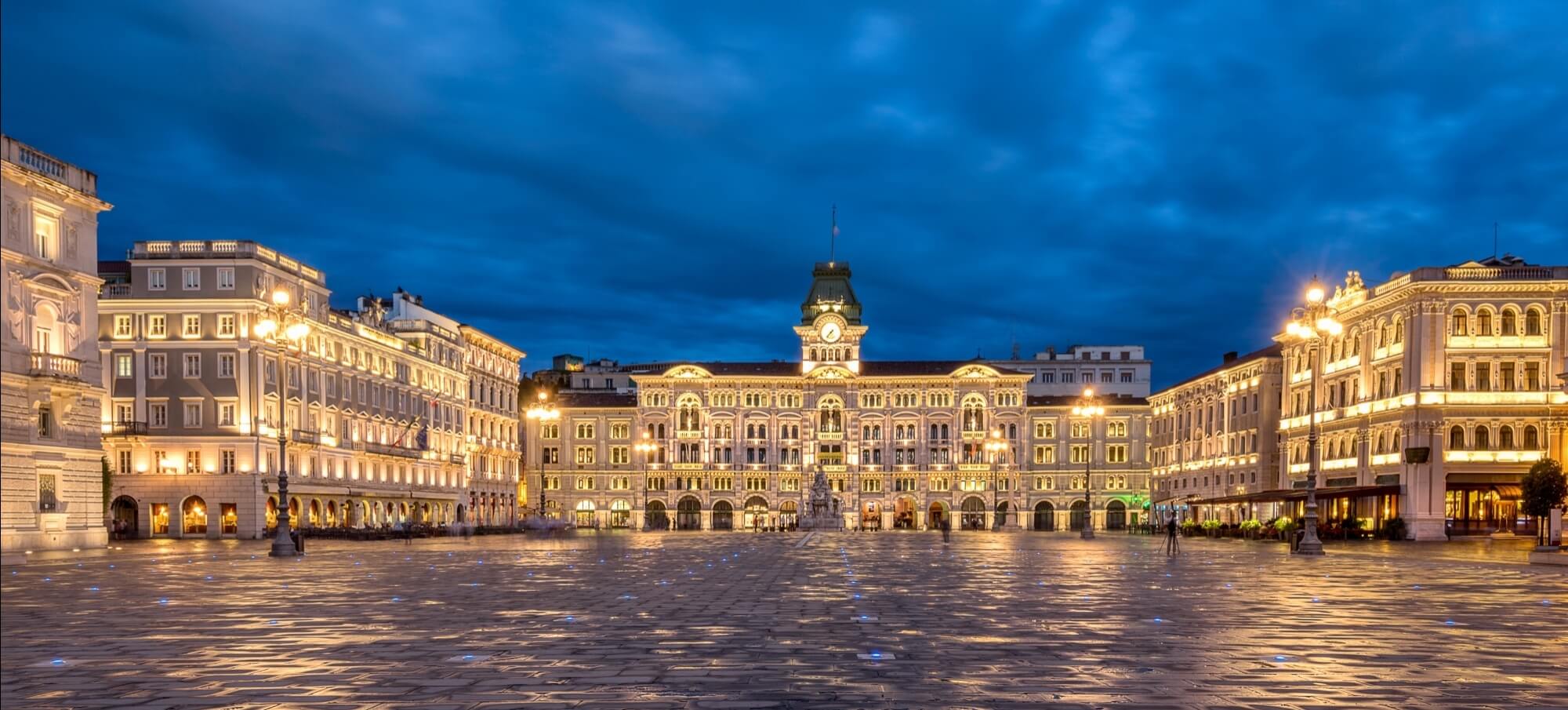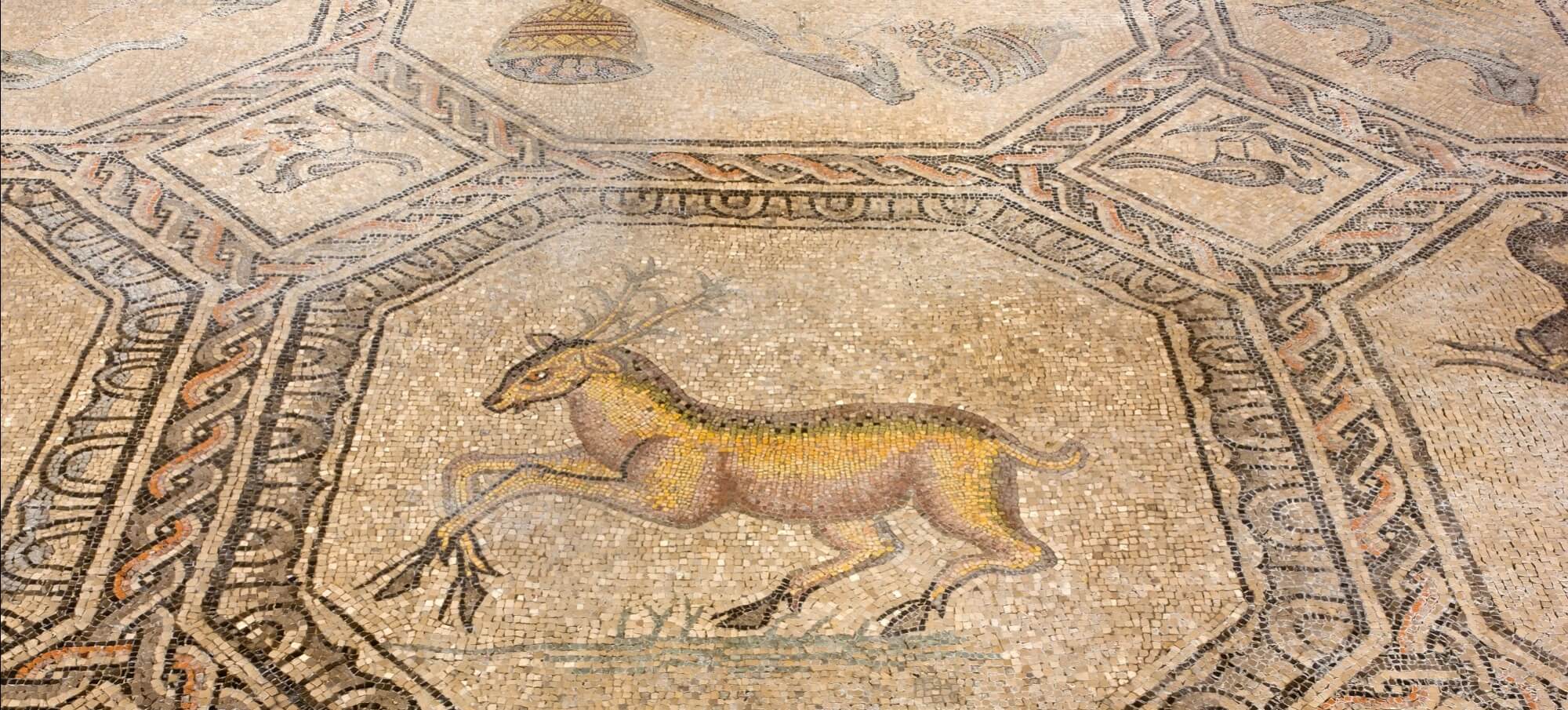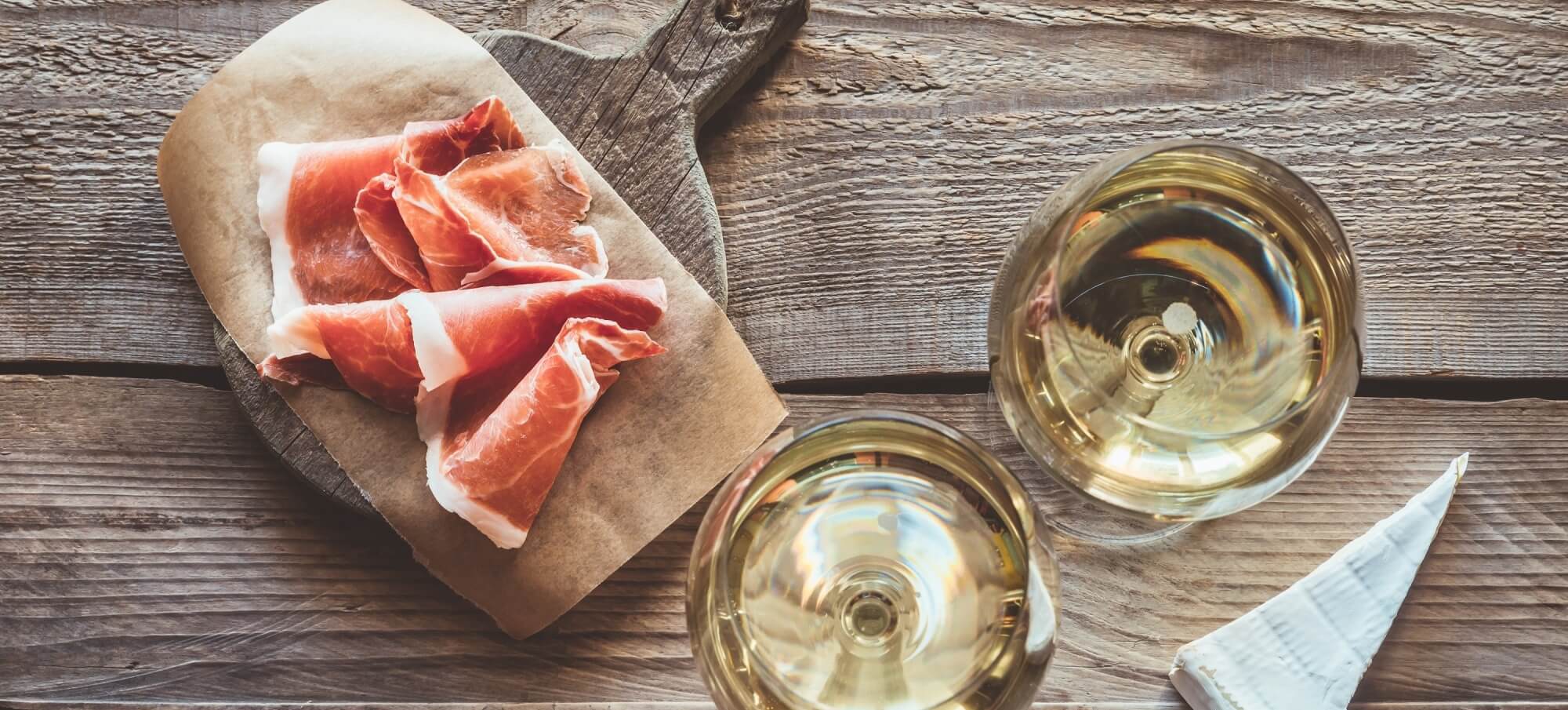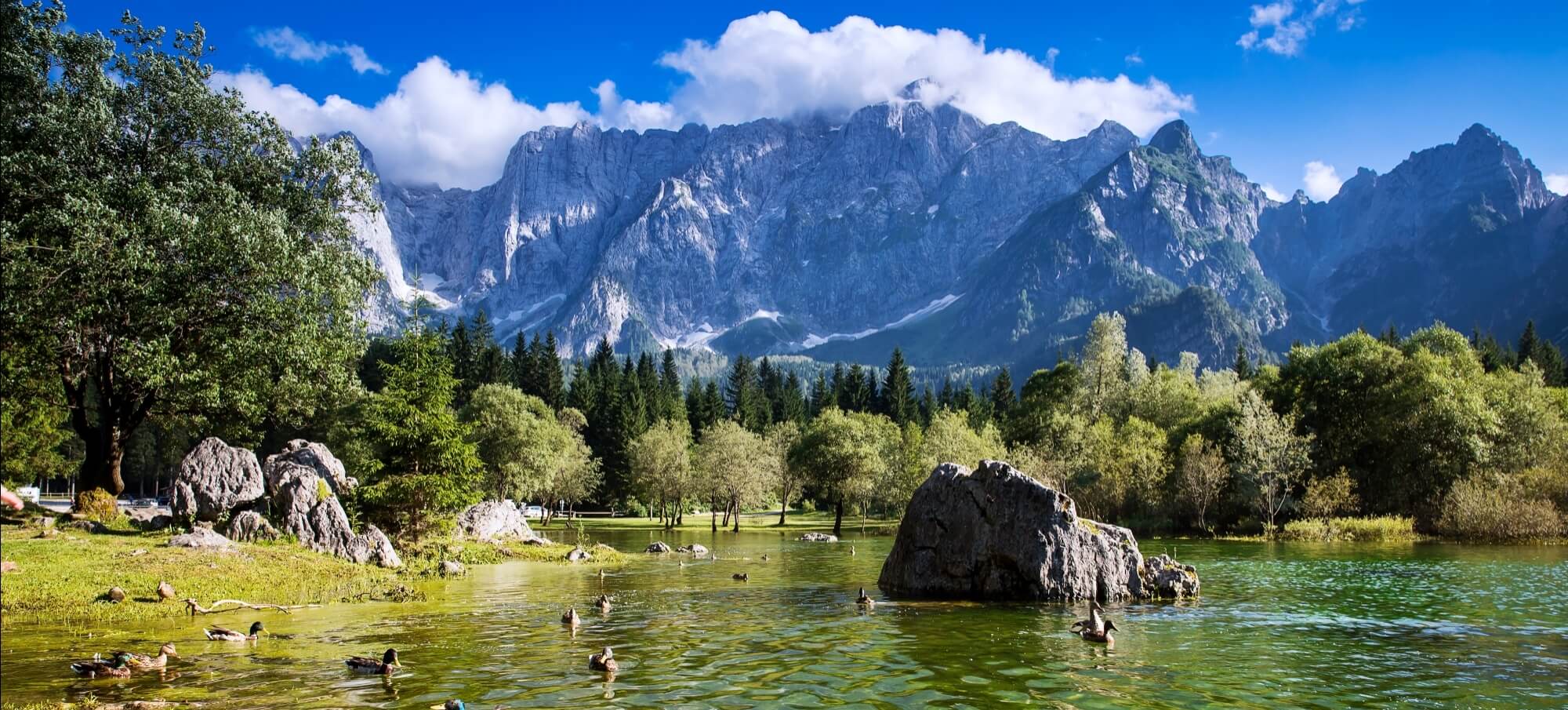10 things not to miss in Friuli Venezia Giulia
“My soul lies in Trieste”

All roads lead to Rome, as the saying goes, but a real trip to the peninsula must include lesser-known, but equally fabulous areas, as well. One is tempted to visit Friuli-Venezia-Giulia if only to explore its triple-barrel appellation: intriguing, mysterious, fascinating, this region has it all, from snow capped mountains to gentle hills lined with vineyards, Roman temples and a staggering coastline where the world’ biggest regatta takes place. A melting pot of cultures and traditions, languages and artworks, it comes as no surprise that such figures as Rilke and Joyce were frequent visitors, the latter even stating that “My soul lies in Trieste”.
Though the clamour of the Austrian Empire may well be gone, the aura and charm of such an inspiring region is truly alive. From active sports like hiking, cycling or sailing to tasting delicious wine and food, reminiscing on an ancient poet’s lyrical production or coming up close with its stark Roman heritage, this region hosts welcoming, proud cities and hamlets that display an impressive past and an equally charming present
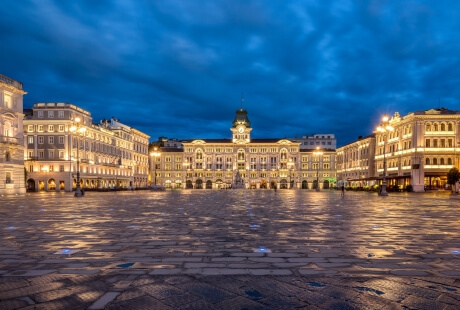
1. Alluring and charismatic: welcome to Trieste
Tucked into such a north-easterly corner of Italy as to feel it belongs to a world apart, Trieste – once Tergeste and now known as Vienna by the sea - is elegant, aristocratic and highly original. Boasting an impressive seafront, lined with striking neoclassical buildings, its main square is the meeting place of this cultural hub. Piazza Unità d’Italia jets onto the sea in such a sleek fashion that emotions run high when gazing at the blue expanse in front of you.
For six hundred years under the Austro-Hungarian domination, Trieste was annexed to Italy in 1954. The Habsburg made the city a free port in 1719 and spared no expense in developing this pivotal harbour centre, welcoming trade and business from the Mediterranean. These days, you’ll be spoilt for exciting places to visit, from an ancient Roman theatre – hosting up to 6.000 spectators in its heyday – to one of the tallest lighthouses in the world, the 68-metre high Faro della Vittoria. Sit in one of Trieste’s elegant coffee bars and reminisce about the past: it is said that Joyce penned his famous Ulysses in one of these places! Admire the beauty of the sea from the Rilke trail, a 2-km coastal path that starts from dreamy Duino Castle, loved by Rainer Maria Rilke and Paul Valery, and reaches the Bay of Sistiana; sitting right on the seafront, the castle is privately owned, but visits will show a collection of artworks and terraces that open onto the sea. Noble, romantic 19th c. Miramare Castle can be seen from a distance: strikingly white, it dominates the gulf of Trieste with its ethereal beauty. Do not miss its programme of interesting exhibitions, laboratories and activities for children and adults. Get lost in its lovely gardens, decorated with fountains, statues, rare botanical species and imposing trees, all living in perfect harmony. Above all, however, Trieste is a city that will strike a chord within your heart, inviting you to explore and dig longer into the city’s mesmerizing aura.
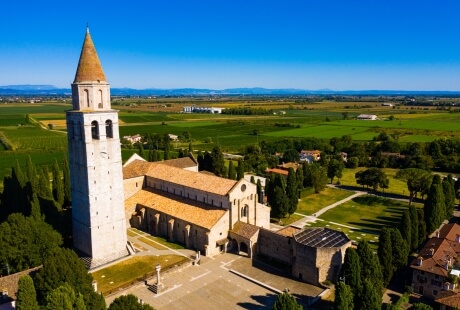
2. A Roman affair: Aquileia
No matter where you go, Italy always has some compelling treasure in stow for you. Aquileia is one such marvel: a UNESCO site since 1998, the town was once one of the wealthiest cities in the Roman Empire – second only to Rome. Raided by Attila the Hun in 452 AD, its inhabitants fled, moving on to found other cities, among which Venice. Today, a fabulous trove of unearthed Roman ruins opens in front of you, this being among the most complete unexcavated Roman sites in the world. But it’s the Basilica of Santa Maria Assunta you’ll want to go to admire a spectacular Roman-era mosaic floor. Construction on the Latin-cross basilica began in the 4th c AD and it was subsequently rebuilt between the 11th and 14th c., following Gothic and Romanesque styles. A sense of peace and serenity will envelop you as you walk in, also reflected in the frescoed apse. The visit also includes the crypt, the ancient tombs and chapels, the baptistery and the bell tower. Find some time for the National Archaeological Museum as well: one of the oldest in Italy, it hosts a varied collection entailing mosaic panels, terracotta urns, reliefs, striking statues and a superb glass collection.
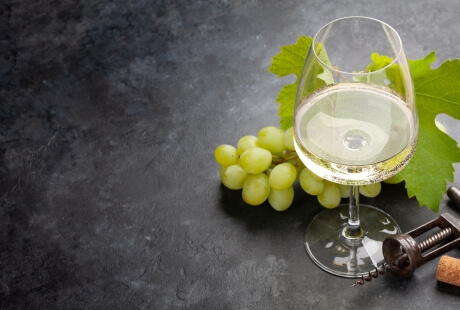
3. Poetry in a glass – Collio wines
Among its vast cultural and historical heritage, eclectic, proud, captivating Friuli-Venezia-Giulia boasts the Collio area: strewn with gentle vineyards and blessed with a special climate and soil, known as ponca or flysch, this district sits on the border with Slovenia and fosters the production of outstanding (primarily) white wines, among the best in the country. Awarded the DOC label as early as 1968, Collio Bianco was the first of a series of superb varieties, such as Pinot Grigio, Pinot Bianco, Ribolla Gialla or Friulano, with connoisseurs captivated by their fresh, mineral rich, aromatic and balanced taste. The renowned dessert wine Picolit is also a local product of excellence: produced in very small quantities, making it rare and exclusive, this wine is elegant and harmonious, exuding all the features that reveal its unique nature.
Wines from the Collio area are best defined as “poetry in a glass”, for they convey the harmony of the bucolic landscape they are produced in: evocative, hill-top San Floriano al Collio is a charming village that sits on the Strada del Vino e delle Ciliegie (the wine and cherry route), with vine clad roads connecting lovely churches, fortresses and serene hamlets. Habsburg-style Cormons is the main municipality and is dominated by the Quarin Mount, where the first local settlements were established, back in Roman times. The wetland Preval area features small lakes and meadows where you will find deer roaming free and ducks: ideal for relaxing strolls and hikes, its calmness is echoed by the lovely Plessiva wood, replete with oak trees and popular with walkers. Linking Capriva del Friuli with Sermons, the Sentiero delle Vigne Alte offers hiking, mountain biking and horse-riding opportunities among gentle vineyards that open onto superb views, reflecting the perfect balance between man and nature in a region that stuns and amazes with its natural, historical and cultural gems.
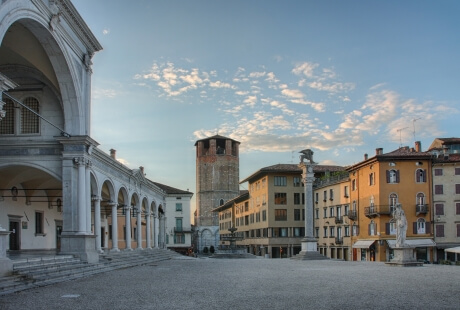
4. Friuli’s second “capital”: Udine
Refined and equally popular, a city for fun seekers and erudite folks alike, Udine is a revelation. Replete with prestigious museums and artworks, its architecture is compelling, with ornate palaces and lovely porticoes that line precious squares like Piazza Matteotti – head here for a lovely tajùt, how the locals call happy hour, or a quick espresso. Built around a hill, here you will find the 16th c. castle that houses the Museo d’arte Antica, with works by Caravaggio, Tiepolo and Bronzino, the Archeological Museum, a Portrait Gallery and the Risorgimento Museum, showing to what extent the locals contributed to the unification of Italy.
Piazza della Libertà, perhaps the most charming Venetian square on the mainland, hosts the lovely Loggia di San Giovanni, with the gracious clock tower, and Arco Bollani, next to it, designed by Andrea Palladio. Find your way to Piazza San Giacomo, loved by the locals, adorned by lovely palaces and featuring a fountain designed by Giovanni di Udine, a disciple of Raphael. Giovanbattista Tiepolo decorated the imposing ceiling of Palazzo Patriarcale; the venue also hosts a 300-year old public library that is worth exploring. Modern art also found its way in this spectacular city; Casa Cavazzini hosts works by De Chirico, Morandi and Campigli, but also Sol LeWitt and Donald Judd, making Udine the perfect destination that suits all tastes.
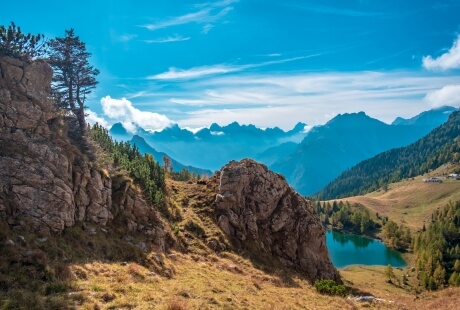
5. The Friuli Dolomites
Everybody loves the Dolomites! The “rock cathedrals” that stir the soul and captivate the imagination with their splendid colours and fabulous geometries extend to this region, as well. The wild, rugged Dolomiti d’oltre Piave, as they are known, comprise the Cridola, Spalti-Monfalconi, Duranno and Pramaggiore groups within a somewhat mysterious territory, replete with natural beauty, geological and fauna trails that make up the Friuli Dolomites Natural Park, part of the UNESCO Heritage. The biggest valleys in the area are Valle del Tagliamento, Val Colvera and Val Tramontina, with excellent outdoor opportunities in the summer and winter alike: hiking and biking along exciting trails in the summer, with cross country skiing, ice climbing and ski mountaineering in the winter. Come and visit the Urlo di pietra, a self-standing, 280-metre high spire with a bell on top – hence called Campanile di Val Montanaia – whose sound is truly special. Hike to the 2706-metre high Cima dei Preti or visit the Pradis caves, which date back to Neanderthal times. Fun times ahead!
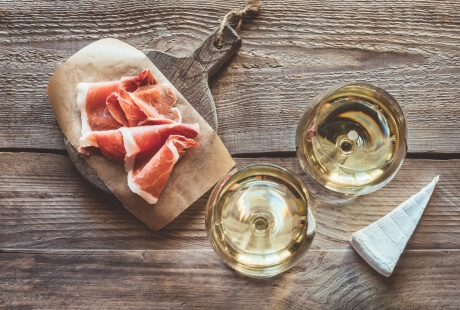
6. A triumph of food
The love affair with food is blatant throughout the peninsula: Italians love cooking, eating delicious produce and even dream about it. This reflects a strong dedication and savoir-faire in creating outstanding delicacies: Friuli is no exception as it offers some seriously delicious products of excellence. The San Daniele Prosciutto – from San Daniele in Friuli – is renowned worldwide and is made with Italian pork and sea salt: a truly simple recipe for a delightful taste. Cheese lovers will enjoy tasty Montasio DOP, slightly pungent Formadi Frant and Fagagna cheese, dating back to 1865. Already known in the 15th century, Frico is a famous delicacy made with Montasio, Latteria or Malga cheese, potatoes and onions cooked in a frying pan and served well hot. Enjoy a hearty Jota, a soup made with potatoes, beans and white cabbage, or filled pasta like the Cjarson della Carnia, made with herbs, potatoes, raisins and cinnamon. Fresh fish comes in droves with Grado-style boreto, baccalà in bianco – a type of cod – and sardoni impanai, with a variety of fish found in the gulf of Trieste.
Finish off with sweet Putiza, Presnitz and Titole, which combine traditions from Mitteleuropa and testify to the rich history that permeates throughout the region.
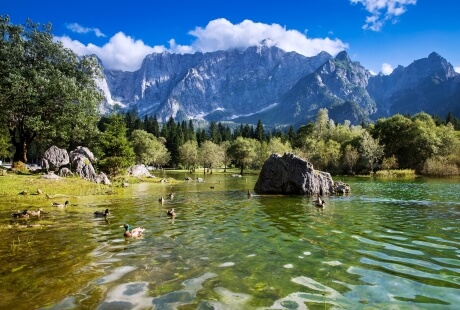
7. Lakes of wonder
Pioneering adventurers and tranquil, daydreaming souls will agree on the poetic beauty of natural lakes encased within a mountain backdrop. Among its many lovely places, Friuli boasts several, lovely lakes that lure you with their natural appeal. The Fusine lakes, close to the border with Slovenia, are indeed magical. Made up by an upper lake and a lower one, they lie at the foot of the Mangart massif in the Julian Alps in a wild, imposing setting, part of the natural border with Slovenia. South of Tarvisio, Predil Lake is spectacular, being surrounded by a lush wood populated with various animals, and imposing mountains featuring waterfalls and ponds: ideal for sport lovers, you can hike around the lake, swim, take up windsurf or even go canoeing on this splendid stretch of water. Cavazzo Lake, also known as Lago dei Tre Comuni, is Friuli’s largest natural lake, touching upon three different municipalities. Its crystalline waters mean water sports are superb, such as kayaking or swimming, but also hiking or simply lounging by the water, making this the ideal place for families as well. And the list continues with other stunning natural lakes such as Avostanis, Volaia, Bordagna or Ragogna, for a region that keeps on revealing its sparkling side.
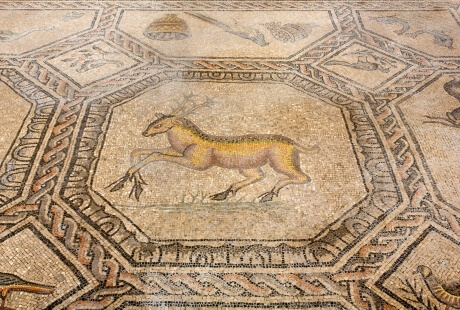
8. Ancient art made modern: the Mosaic school in Spilimbergo
Dating back to the 3rd millennia BC, the art of mosaic has always fascinated mankind, with impressive examples found throughout the world, from Jordan to Thailand, Russia to Serbia, with pivotal artworks decorating churches in Ravenna, Palermo and Sicily. Requiring competence and expertise, mosaic decorations testify to the great skill of the artists who executed them, painstakingly selecting tesserae to create an image. Of the very few mosaic schools in the world, the Scuola Mosaicisti del Friuli in Spilimbergo, west of Udine, ranks as one of the finest.
Founded in 1922, its alumni went on to decorate pivotal places such as Ground Zero in New York and the church of the Holy Sepulchre in Jerusalem. The school itself displays several examples throughout its building, making this a solid testimony to 20th c. mosaic art. Preserving a rich cultural heritage – the art of mosaics dates back many centuries in this area – you can learn about this fascinating art form with a guided tour of the 800+ works on permanent display, admire an artist at work and breathe in the creative flair that has always prevailed in this exciting corner of Northern Italy. Short and academic courses are on offer to lean all things mosaic-related in the cradle of mosaic art. Throw in a stop at Grado’s Sant’Eufemia’s church and marvel at its Byzantine mosaic floor, dating back to the VI century: it’s poetry for the soul
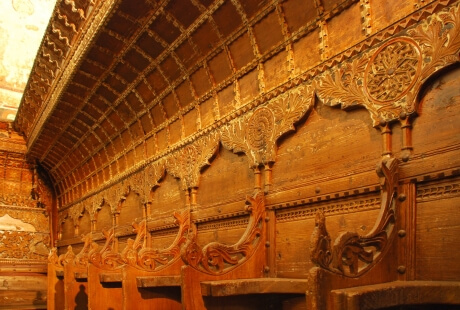
9. A Lombard atmosphere – Cividale del Friuli
When you thought your discovery trip to this exciting region could not get any more interesting, there pops up yet another UNESCO heritage site that simply stuns visitors. Cividale del Friuli was founded by Julius Caesar in 568 AD and later became the first seat of the Lombard Duchy in Italy. The recently restored 8th c. Tempietto Longobardo offers the only example of Lombard architecture in Europe and features stunning frescoes with Greek-Byzantine connotations, alongside stucco works depicting female figures. The Museo Cristiano del Duomo hosts the 8th c. Ratchis altar and the Baptistry of Callisto, as well as paintings by Veronese in a mesmerising setting, while the National Archaeological Museum entails precious objects from the Roman as well as Romanesque and Gothic periods. Find some time to visit the 22-metre-high Ponte del Diavolo (Devil’s Bridge) on the Natisone river: dating back to the 15th c, it was reconstructed after WWI bombings and is truly spectacular

10. A journey beyond racing – Barcolana
Held on the second Sunday of October in Trieste, the Barcolana is the world’s largest regatta and perfectly embodies the love affair of Trieste with the sea. The competition is lived, in fact, more as a unique experience than a challenging race, with sea-loving people celebrating their element in this fascinating city.
Now in its 55th year, more than 400 thousand people took part in the 10-day event: the race is followed by countless enthusiasts and the entire city comes alive with fervour and passion. The boats have to cover 13 nautical miles from a point set between Barcola and Miramare and end at Piazza Unità d’Italia for a spectacular finish. The event seeks to combine art and sport, as epitomised in the 2023 poster, where flower petals become sails in a lovely manifesto where the beauty of the sea takes on a new level of appreciation
Travel Tips where to stay
Ask for more info about the best experiences and itinereraries we can design in Tuscany
marketing@claudiadarin.it
All contents, photos and texts are subject to copyright. They are only authorised on my website and social media. Ideas can be a source of inspiration, but any unauthorised use of images and texts is strictly forbidden. All rights reserved.
